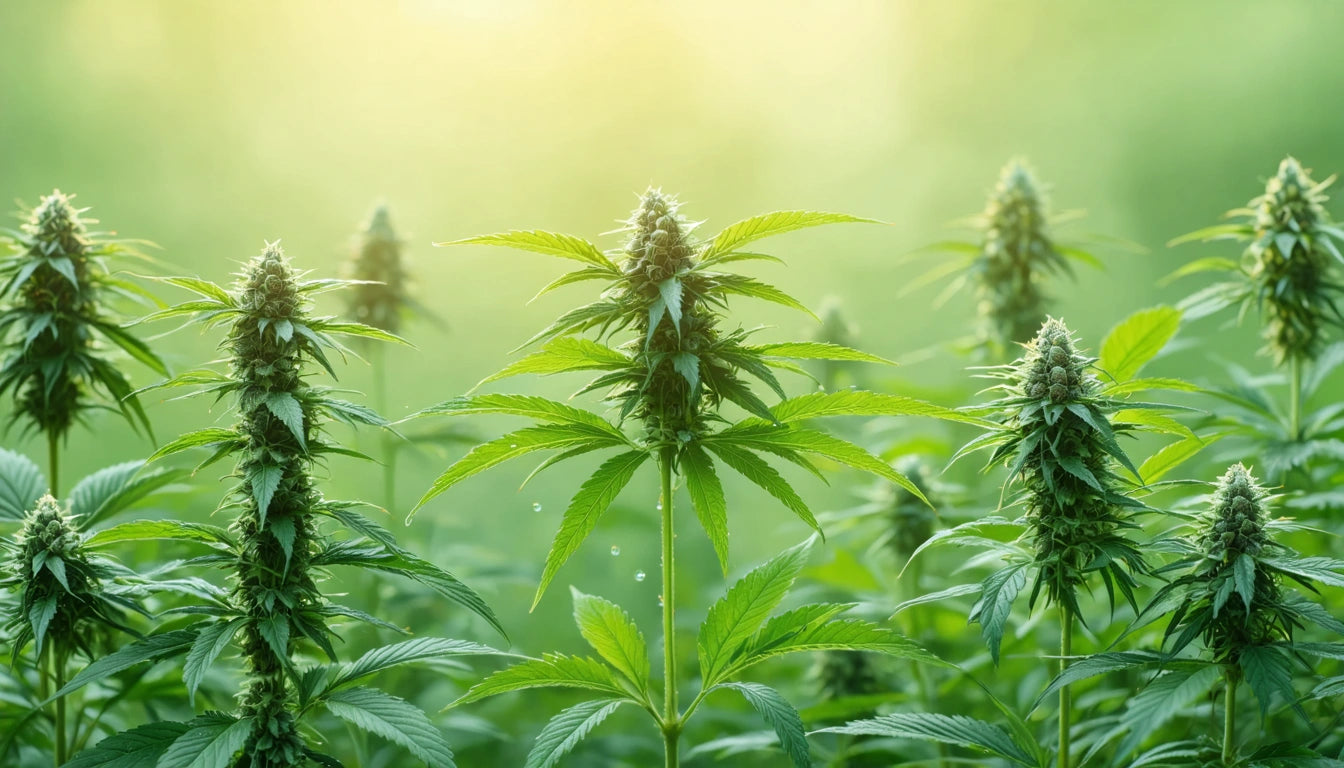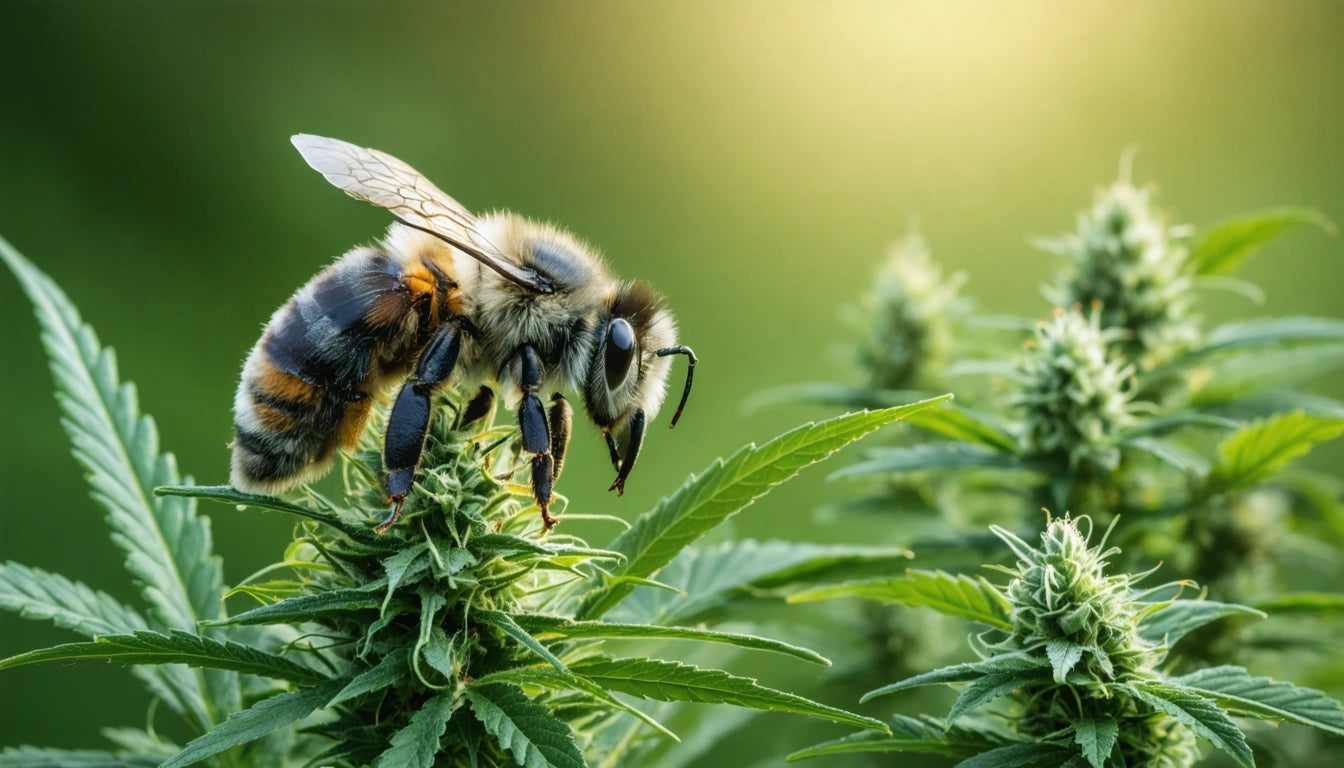Table of Contents
Do Weed Stems and Leaves Contain THC?
Cannabis enthusiasts and industry professionals often focus on the flower buds of the plant, which contain the highest concentration of cannabinoids. However, questions frequently arise about other parts of the plant: do weed stems have THC? Do marijuana leaves contain meaningful amounts of the psychoactive compound? Understanding the distribution of THC throughout the cannabis plant has important implications for consumers, processors, and waste management in the industry.
THC Distribution in the Cannabis Plant
THC (tetrahydrocannabinol) is primarily produced in the trichomes, those tiny crystal-like structures that give cannabis flowers their frosty appearance. Understanding THC as the key component in cannabis means recognizing that its concentration varies significantly throughout different parts of the plant.
The distribution of THC in a cannabis plant follows this general pattern from highest to lowest concentration:
- Flower buds (cola) - highest concentration
- Sugar leaves (small leaves near the buds)
- Fan leaves (larger leaves)
- Stems
- Stalks and roots - minimal to no THC
Stems and THC Content Explained
Do stems contain THC? The answer is yes, but in much lower quantities than the flower. Cannabis stems do contain trace amounts of THC, typically ranging from 0.1% to 0.5% by dry weight. This is significantly lower than premium flower buds, which can contain 15-30% THC or more.
The stems' THC content varies based on several factors:
- Proximity to flower (stems closer to buds contain more THC)
- Plant genetics (high-THC strains may have slightly higher THC content in stems)
- Growing conditions (optimal growing environments may increase overall plant potency)
When storing cannabis products, proper packaging is essential to preserve whatever cannabinoids are present. Many producers use specialized mylar bags designed for cannabis storage to maintain freshness and potency, whether storing premium flower or processing stems and trim.
Leaves and Their Varying THC Levels
Do weed leaves have THC? Yes, but the concentration depends on the type of leaf. Cannabis leaves fall into two main categories:
Sugar Leaves
These small leaves grow among and close to the flower buds. They're called "sugar leaves" because they're often covered with trichomes, giving them a sugary appearance. Sugar leaves can contain appreciable amounts of THC, ranging from 2% to 6%, making them valuable for extraction processes.
Fan Leaves
The larger leaves that extend from the main stem contain much less THC, typically 0.3% to 1%. While do marijuana leaves have THC in these larger structures, the amount is minimal compared to flower buds. However, they still contain other cannabinoids and terpenes that may have beneficial properties.
Comparing Plant Parts for Potency
When examining cannabis products like Packwoods, consumers often wonder about overall potency. Does Packwoods have THC? As a premium cannabis product, Packwoods typically contains high-THC flower rather than stems or leaves, focusing on the most potent parts of the plant.
For comparison, here's how different parts of the cannabis plant typically measure up in terms of THC content:
- Premium flower: 15-30%+ THC
- Sugar leaves: 2-6% THC
- Fan leaves: 0.3-1% THC
- Stems: 0.1-0.5% THC
This variation explains why processors focus on flower for premium products and may use sugar leaves for extracts, while larger fan leaves and stems are often considered byproducts with limited value for THC extraction.
Extraction Considerations for Stems and Leaves
Despite their lower THC content, stems and leaves aren't always discarded. Understanding THC types and uses helps explain why these plant parts might still be valuable in certain contexts.
For extraction purposes, processors might include sugar leaves with flowers to increase overall biomass, though this typically dilutes the potency of the final product. Stems are rarely used in commercial extraction due to their minimal THC content and the high amount of plant material needed to extract meaningful amounts of cannabinoids.
When stems and leaves are used, extraction methods typically include:
- Solvent-based extraction (using ethanol, butane, or CO2)
- Solventless methods (ice water extraction for hash)
- Infusion into oils or alcohols
The efficiency of these methods varies, but all require significantly more plant material when working with stems and leaves compared to flower.
Practical Applications for Cannabis Byproducts
Rather than focusing solely on their THC content, cannabis stems and leaves can serve other purposes in the industry:
- Hemp fiber production (from stems)
- Composting and soil amendment
- CBD extraction (particularly from hemp varieties)
- Terpene extraction for aromatherapy
- Tea and topical preparations
For consumers wondering if these parts of the plant offer any value, understanding THC effects and benefits helps put their minimal potency into perspective. While stems and fan leaves contain small amounts of cannabinoids, they typically won't produce significant psychoactive effects when consumed.
The cannabis industry continues to evolve in how it utilizes the entire plant. As understanding of THC and THCA flower grows, so too does appreciation for the varied applications of different plant parts, regardless of their THC content.
In summary, while weed stems and leaves do contain THC, the amounts are significantly lower than what's found in flower buds. This knowledge helps consumers set appropriate expectations and helps processors determine the most efficient use of cannabis plant material.











Leave a comment
All comments are moderated before being published.
This site is protected by hCaptcha and the hCaptcha Privacy Policy and Terms of Service apply.